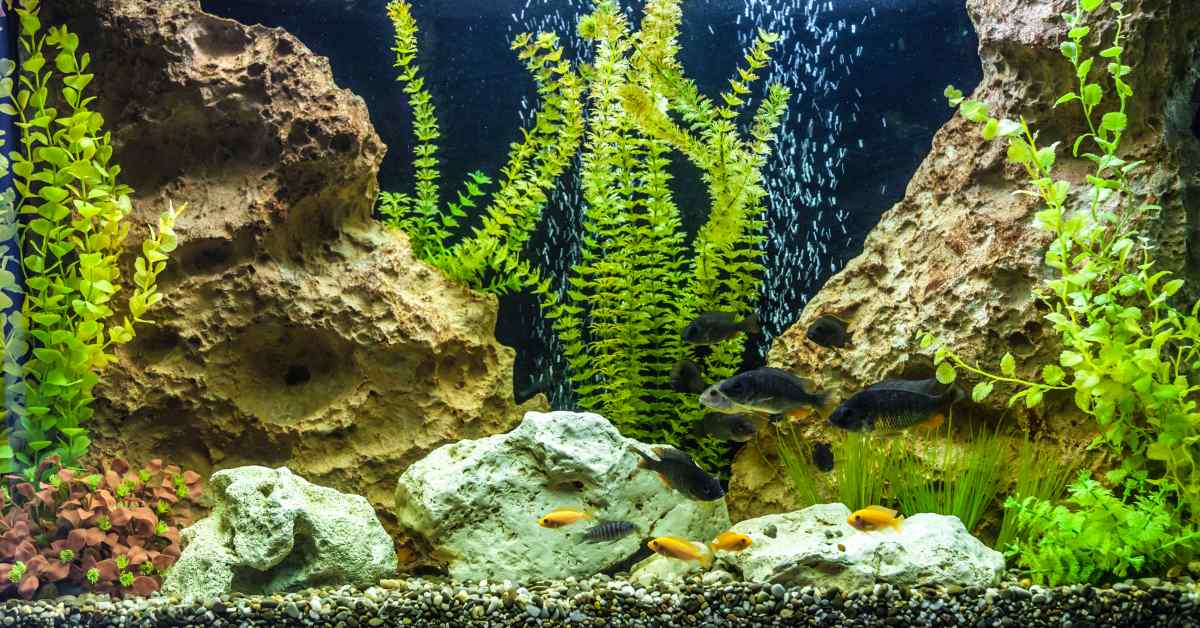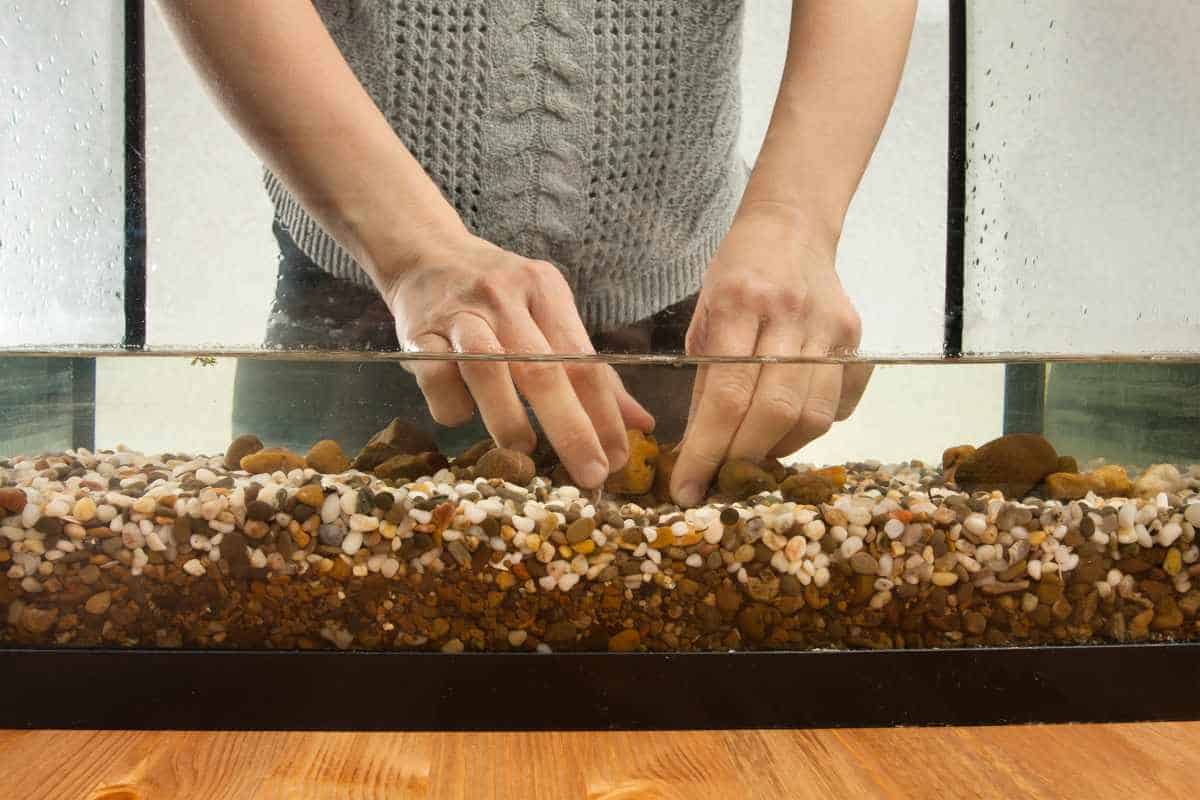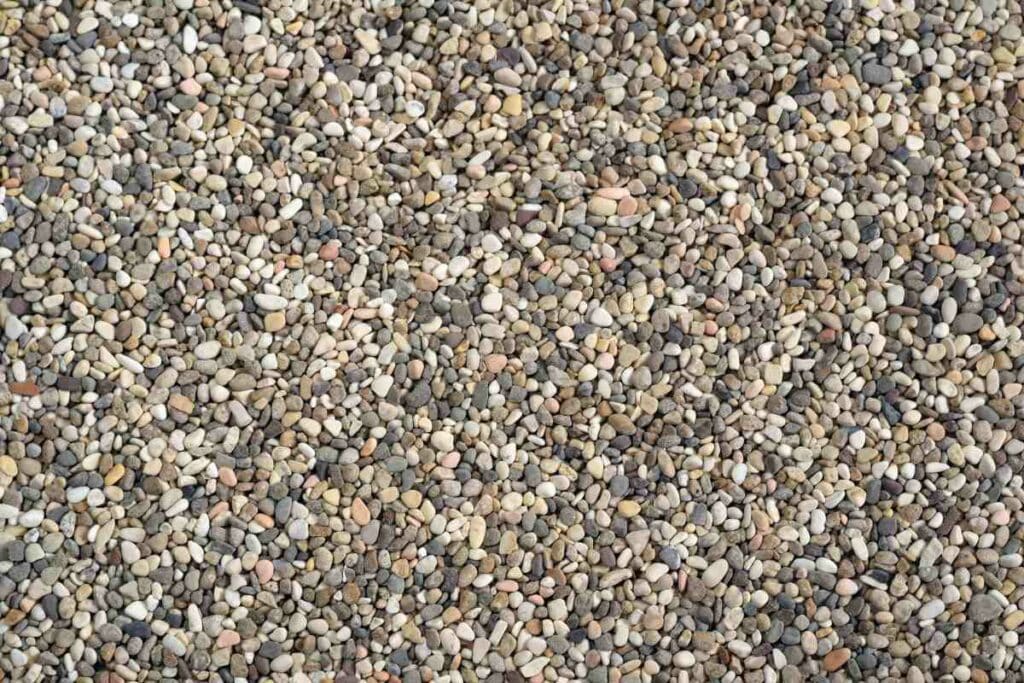the essentials in brief
For an aquarium, it is recommended to choose quartz gravel. It is versatile, pH neutral and promotes healthy plant growth. You can find out what functions gravel has in general here...
It is possible to use normal gravel in the aquarium, however it is advisable to use aquarium gravel or special aquasoil. You can find different types of gravel for the aquarium here...
The choice between sand and stones depends on the aquarium inhabitants and the design. Sand is good for burrowing animals, while rocks provide hiding places and support bacterial growth.
Today we explain everything you need to know about aquarium gravel need to know. When it comes to creating a stunning aquarium, gravel plays an essential role that goes far beyond pure aesthetics. In this post, we will explore the diverse functions of aquarium gravel and show you how you can use this seemingly simple element to create a vibrant and healthy underwater world. So grab your diving goggles and let’s dive into the depths of the aquarium gravel together!
The versatile role of gravel in the aquarium

If you have ever visited an aquarium or even set one up yourself, you have surely noticed that the gravel on the bottom plays an important role. But did you know that this is not just for aesthetic beautification serves, but also a series essential functions Fulfills?
Did you know that…?
The gravel in your aquarium plays an important role in the biological filtration of the water. The porous surface of the pebbles provides an ideal habitat for beneficial bacteria. These bacteria are essential for the nitrogen cycle in the aquarium. They convert harmful substances such as ammonia and nitrite, which come from fish waste and uneaten food, into less toxic substances – namely nitrate. In this way, the gravel contributes significantly to maintaining healthy water quality and creates a livable environment for your underwater inhabitants.
The gravel plays a role not only for you, but also for your fish. The different grit sizes of the gravel allow fish to nest in them hide and appropriate places to spawn to find. This promotes the natural behavior of your aquarium inhabitants and can help the fish population in your aquarium to multiply and thrive.
The gravel not only makes fish feel comfortable, but also performs an important technical function. He prevents the substrate from being whirled up, especially if you use an aquarium filter. A stable substrate is essential to securely anchor plants and decorations and to ensure a clear view in your aquarium.
For all plant lovers among us: The gravel in the aquarium serves as a storage for nutrients. If you keep aquatic plants in your tank, they can anchor their roots in the gravel and absorb important nutrients there. This enables healthy plant growth and helps to stabilize the ecological balance in your aquarium.
The different types of gravel for the aquarium
When it comes to the Choosing the right gravel for your aquarium, a fascinating world full of colors, textures and properties opens up. The substrate not only plays a role in the aesthetics of your aquarium, but can also affect the well-being of your fish and plants.
Here you can find out more about the various types of gravelthat are available and what advantages and disadvantages they entail.
quartz gravel: Quartz gravel is probably the best known and most commonly used type of gravel for aquariums. It is available in different colors, from natural sandy beige to elegant black and lively multicolored. Quartz gravel is not only visually appealing, but also very well suited for plant growth. It is pH-neutral and therefore does not affect the chemical balance of your aquarium.
basalt gravel: Basalt gravel brings a natural and rustic flair to your aquarium. Due to its porous structure, this dark gravel is very well suited for the bacterial population that is required for biological filtration. However, it can lower pH slightly, which may be beneficial for some species of fish but should be avoided for others.
Dolomite limestone gravel: If you keep fish species that prefer a higher pH, dolomite limestone gravel could be a good choice. This gravel can help raise the pH level in your aquarium slightly. However, be careful not to conflict with acidic conditions, as it could then dissolve.
lava gravel: Lava gravel is an interesting option due to its lightness. It is porous and offers bacteria an optimal habitat, which contributes to filtering. Due to its airiness, however, it can be stirred up, so caution is advised, especially if you're using a strong filter.
Aqua soil: If you want to design your aquarium primarily for aquatic plants, you should consider Aquasoils. These special substrates are rich in nutrients and provide ideal conditions for plant growth. However, they can lower the pH value and should therefore be used with caution.
Tip: In order to create a stable and visually appealing environment for your fish and plants, it is advisable to lay the gravel in the aquarium in layers. Start with a thin layer to stabilize the substrate and prevent nutrients from seeping into the lower layers. Put a slightly thicker layer on top to achieve the aesthetic effect.
Grit in Focus: The Importance of Gravel Size in the Aquarium
Have you ever wondered why the Size and granulation of the pebbles are so important in the aquarium? Choosing the right size of gravel not only affects the appearance of your underwater world, but also has an impact on the health of your aquarium inhabitants.
The size of the pebbles directly affects this growth of your aquatic plants. Coarse grains do not allow the plant roots to anchor themselves optimally, while gravel that is too fine can inhibit root growth. A medium grit, around 2-5 mm, is often ideal. It allows the roots to find support while absorbing nutrients.
Zu fine gravel can easily be blown up, resulting in unsightly suspended solids in the water. This not only affects visibility, but can also overload the filter. Therefore, opt for gravel with a grit large enough to minimize such problems.
The size of the gravel can do that too influence the behavior of your fish. Smaller fish species may injure themselves or become uncomfortable in coarse gravel. On the other hand, larger grains may be better suited for fish species that rummage through the bottom. A balance is important here to accommodate the needs of all fish.
The gravel in the aquarium harbors beneficial bacteria that support the nitrogen cycle. The size of the pebbles affects the surfaceon which these bacteria can live. Finer granules provide more surface area for bacterial growth, which aids in biological filtration.
Of course she plays Aesthetics a role. The size and granulation of the pebbles can greatly affect the appearance of your aquarium. Choose a size of gravel that suits your aquarium inhabitants as well as your personal style.

The correct filling of your aquarium
So you've decided to design an aquarium - congratulations! Filling your aquarium correctly is the first step on the way to a lively and fascinating underwater world. Here are some tips on how to make your Fill the aquarium properly can do to create a harmonious and healthy ecosystem.
Consider these factors when filling your aquarium:
- The right location: Before you fill your aquarium, you should choose the perfect location. Avoid direct sunlight as it can lead to algae growth. Make sure the surface is stable and level to evenly distribute the weight of the aquarium.
- Aquarium pad: Place a special aquarium mat under your aquarium to level out any unevenness and avoid pressure points. This pad not only protects your furniture, but also the stability of the aquarium itself.
- The right amount of substrate: Choose your substrate carefully depending on the type of aquarium inhabitants you want to house. Gravel, sand or plant substrate can be used. Rinse the substrate thoroughly before inserting to remove excess dust and dirt.
- Place Furnishings: Before you fill in water, you can now arrange decorations such as stones, roots and plants in your aquarium. Make sure you leave enough space for swimming and hiding spots for the fish.
- Fill in water: Slowly fill the aquarium with water. It is best to use a flat plate to introduce the water gently and to minimize water movement that could disturb the substrate.
- Water treatment: Treat the water with a quality water conditioner to neutralize pollutants like chlorine and heavy metals. Choosing the right water conditioner is crucial to ensure optimal water for your fish.
- put plants: If you are using live plants, carefully plant them in the substrate now. Be careful not to crowd the plants too closely to leave enough room for them to grow.
- Switch on filter and heating: Connect and turn on the aquarium filter and heater. The filter ensures clean water and the heater keeps the temperature constant, which is essential for your fish.
With these steps you can ensure that your aquarium is optimally set up and a healthy environment for your future aquarium inhabitants. Don't forget to regularly check water parameters and make adjustments if necessary to keep your underwater paradise in the best condition.
Note: Let the aquarium run for at least 24 hours before adding fish. This allows the water to stabilize and equalize the temperature.
Taboo in the tank: what you should not fill in the aquarium
When setting up your aquarium you want to make sure everything is running perfectly and your aquarium dwellers in the best shape are. But just as important as what you put in your tank is what you should avoid.
Here are some things you'd better not bring into the aquarium to protect the health of your aquatic life.
It may sound obvious, but it is important to emphasize: avoid at all costs poisonous substances put in the aquarium. This includes chemicals, detergents, pesticides or other harmful chemicals. These can disturb the sensitive ecological balance of the aquarium and seriously endanger your fish and plants.
Although hardscape elements such as roots and rocks can be great additions to your aquarium, it is important to ensure they have been treated for aquarium use. Untreated wood can release resins, tannins or pollutants into the water that have a negative impact on your water quality.
Before you add new fish or plants to your aquarium, you should plant them thorough quarantine undergo to ensure they are disease or parasite free. The introduction of diseased organisms can lead to the rapid spread of disease throughout the aquarium.
avoid sudden and drastic changesn to make in the aquarium. This applies to changes in water parameters such as temperature, pH value or degree of hardness. These can cause stress for your aquarium inhabitants and lead to health problems.
It may be tempting to bring aquatic plants or animals from nature into the aquarium. But these can introduce diseases or pests and disturb the ecological balance. Use plants and animals instead trusted sources.
Additional information: While not directly related to overfeeding, overfeeding is an important thing to avoid. Uneaten food can rot and degrade water quality, creating an unhealthy environment for your fish.
The key to underwater harmony
Aquarium gravel is much more than just an optical addition. He supports them biological filtration, offers Living Space for beneficial bacteria hideouts for fish and promotes plant growth. Choosing the right type of gravel and grit is crucial, as is careful layering. Your attention to gravel placement contributes to the health and beauty of your underwater world.

